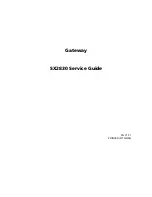
112
C
HAPTER
2: D
IAL
P
LAN
The first
TableEntry Create
command creates entry 100 in Table 1. This
assumes that the highest previous entry in Table 1 was 99 or lower. Entry
100 watches for the 2-digit sequence 62 followed by a 4-digit extension
and specifies route 522 whenever a user dials such a 6-digit (Min = 6 and
Max = 6) sequence. Entry 101 watches for the 2-digit sequence 63
followed by a 4-digit extension and specifies route 523 whenever a user
dials such a 6-digit sequence. The choice of route numbers is made by the
person configuring the dial plans for the sites.
The next two
TableEntry Create
commands are set up in a similar manner
to handle VTL connections with passwords. If a user dials 72 followed by
a 4-digit extension, the VTL call uses route 524. If a user dials 73 followed
by a 4-digit extension, the VTL call uses route 525. These two commands
specify a minimum of 6 digits (for example, if the caller is calling an
internal extension preceded by the site code) and a maximum of 32 digits
(for example if the caller is calling a long-distance or international number
preceded by the site code).
The first two
DestinationRoute Create
commands create routes 522 and
523. The Description field contains any text you want to use to describe
each route.
The second two
DestinationRoute Create
commands create routes 524
and 525, the routes that are used with a VTL password.
The four
DestinationRouteEntry Create
commands specify the extension
list for routes 522, 523, 524, and 525. Extension list *0006 is the default
extension list for VTLs.
For the first two DestinationRoutes, two
DestinationRouteOperation
Create
commands perform two functions:
■
The
stripLead
command removes the two digits (62 or 63) leaving the
4-digit extension the user dialed.
■
The
prepend
command adds the IP Address of the destination NBX
system to the extension that the user dialed. In this example, the IP
address for Atlanta is 192.169.25.100 and for Dallas, the IP address is
192.168.35.100. In the dial plan, you must use an asterisk (*) instead
of a period (.) to separate the fields within the IP address, and to
separate the IP address from the destination extension.
Summary of Contents for NBX 100
Page 14: ......
Page 18: ...18 ABOUT THIS GUIDE ...
Page 26: ...26 CHAPTER 1 INTRODUCTION ...
Page 138: ...138 CHAPTER 2 DIAL PLAN ...
Page 322: ...322 CHAPTER 3 DEVICE CONFIGURATION ...
Page 328: ...328 CHAPTER 4 USER CONFIGURATION ...
Page 412: ...412 CHAPTER 10 TROUBLESHOOTING ...
Page 458: ...458 APPENDIX B ISDN COMPLETION CAUSE CODES ...
Page 480: ...480 GLOSSARY ...
Page 492: ...492 INDEX ...
















































